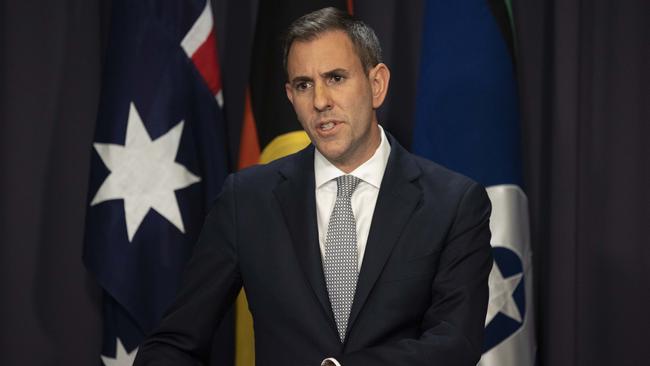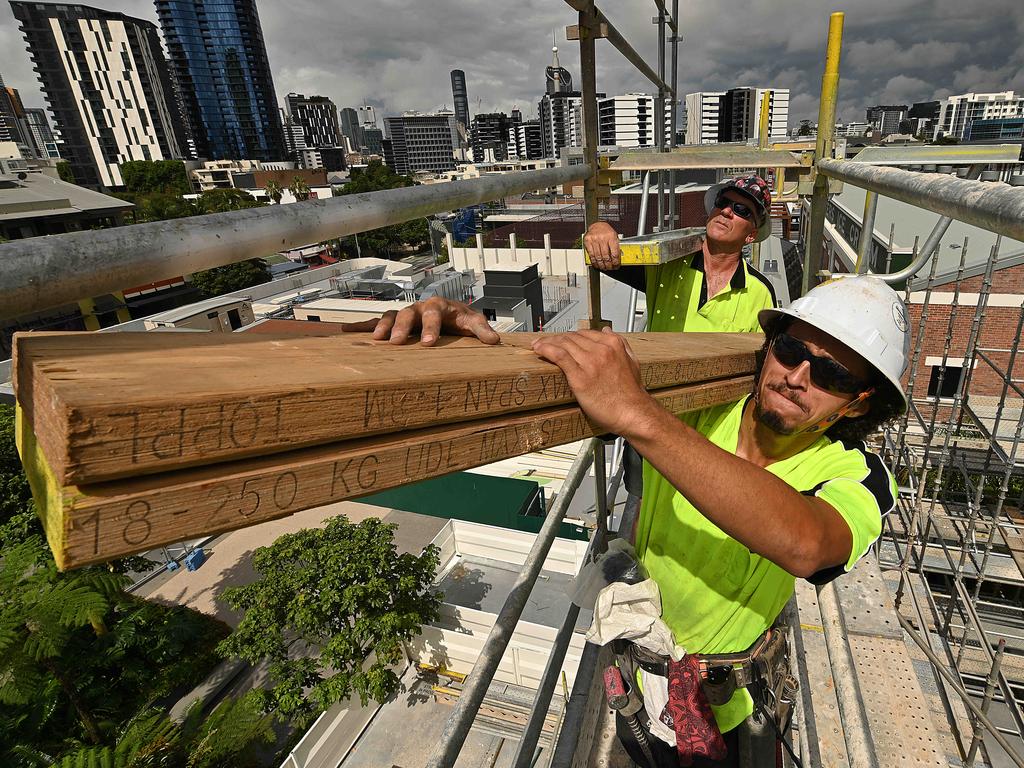Millions to wear cost of stage-three tax cut retreat
About 2.5 million middle-income earners will pay thousands of dollars in additional tax if the stage-three tax cuts are abolished.

About 2.5 million middle-income Australians will pay thousands of dollars in additional tax if the stage-three tax cuts due to start in 2024 are abolished, with the hit to pay packets coming at a time when economists warn the economy will be going through a deep slowdown.
With Labor MPs split on the future of stage three, ACTU leader Sally McManus on Wednesday night ramped up the pressure on the Albanese government to abolish the tax cuts, calling them “grossly unfair” after Jim Chalmers signalled the package was under review.
But an analysis by The Australian shows a wage earner on $120,000 would be $1875 worse off in 2024-25 if the final tranche of tax relief is scrapped, while a worker earning $160,000 would be $4675 worse off. A household of two on $120,000 and $80,000 would be collectively $2750 poorer.
Senior government sources said the decision on stage three would be a “shit sandwich” for Labor either way, with Dr Chalmers considering wearing the political pain of a broken promise to leave the budget in a better position for the future.
Sources said reviewing stage three was in light of expected increases in expenditure as the Fair Work Commission considers whether to award aged-care workers a pay rise.
The Australian’s analysis comes as leading economists said delivering tax cuts to households in 2024 would be “perfectly timed” to offset a widely forecast sharp growth downturn.
ANZ head of Australian economics David Plank said while inflation was the challenge over the coming 12 months, the consensus view was that the economy would be “very weak” by 2024 – with stalling growth, rising unemployment and consumer price growth back below 3 per cent.

“That looks like the perfect time for tax cuts,” Mr Plank said. EY chief economist Cherelle Murphy said that in two years’ time handing back tax to workers “could feel a lot more sensible than it does right now”.
“Tax cuts are certainly not a bad thing for growth if it encourages people to take on more work and increases participation,” Ms Murphy said. “And that is something we do need on an ongoing basis.”
But in a speech to The Australia Institute on Wednesday, Ms McManus called for the extra revenue to be used to fund higher pay for care workers and provide more handouts to households struggling with the rising cost of living.
“The Labor Party supported stage-three tax cuts in 2018 when the world was a very different place,” she said. “There was no Covid and no lockdowns. There was no JobKeeper – which the union movement fought and won – the unprecedented fiscal stimulus that saved jobs and saved the economy.
“And while wages were stagnant then, workers were not facing the absolute cost-of-living crisis confronting them today. Good policy is having an open and honest national conversation about the problems we face and providing leadership to find the best solutions. It requires adaptation to changing circumstances.”
The Parliamentary Budget Office has said that if tax rates and thresholds are left unchanged for a number of years, bracket creep will steadily make the income tax system less progressive. As a result of bracket creep middle-income earners will increasingly bear the burden of the expanding scope of government spending.
Research by Cameron Chisholm, the director of the revenue analysis branch of the PBO, has found that average personal tax rates could be higher than they were before the GST was introduced – even accounting for the stage-three tax cuts.
Experts believe that the higher the average income tax rate, the more of a burden there is on the economy from fiscal drag and from the climbing disincentive to work.
Labor campaigned in the 2019 and 2022 federal elections on keeping the tax cuts, and some senior MPs are concerned about the political fallout from a broken promise just five months from the last election.
The Australian on Wednesday revealed there were a significant number of Right faction MPs resistant to any changes to stage three, including Mike Freelander, Helen Polley and Meryl Swanson.
But Labor Left MP Brian Mitchell backed Dr Chalmers reviewing the government’s support for stage-three tax cuts, declaring “everything should be looked at” given the deteriorating global economic outlook.
“I certainly think that everything should be looked at, circumstances globally are in flux,” Mr Mitchell said. “We should be looking at everything in the arsenal to make sure we can deliver an economy which is in the best interests of the country.”
Labor Right MP Josh Burns said he was concerned about the structural government deficit. “We are spending more paying down Liberal debt than we are on public schools,” he said. “The budget situation is serious and we need to manage the budget and the economy responsibly.”
Labor MP Marion Scrymgour said she did not believe the government would face much political pain by walking away from the tax cuts, and urged Dr Chalmers to finalise his position by the October 25 budget.
Ms Scrymgour, the member for the Northern Territory seat of Lingiari, said amending stage three would give the government more firepower to address cost-of-living issues.
“I know that during the election that there was a commitment that we wouldn’t walk away from it,” she said. “But sometimes it shows governments are listening when they can say ‘we have heard what the public is saying given the cost-of-living pressures’. I don’t think the Australian public will judge the government too harshly.”
Finance Minister Katy Gallagher said senior cabinet ministers were reviewing policies ahead of the budget, raising concerns with the structural budget deficit.
Greens leader Adam Bandt has claimed continuing with stage three would “turbocharge inequality”, but that claim was debunked by Rich Insights principal Chris Richardson.
He has calculated that removing the stage-three cuts entirely would leave the top 10 per cent of workers by income accounting for 44.6 per cent of total tax paid – lower than the 45.1 per cent if stage three goes ahead.
“Although stage three does benefit the top 10 per cent, it actually delivers tax cuts to the top 78 per cent of taxpayers,” Mr Richardson said.
“Anybody with a taxable income of $45,000 or over benefits from the stage-three tax cuts.






To join the conversation, please log in. Don't have an account? Register
Join the conversation, you are commenting as Logout